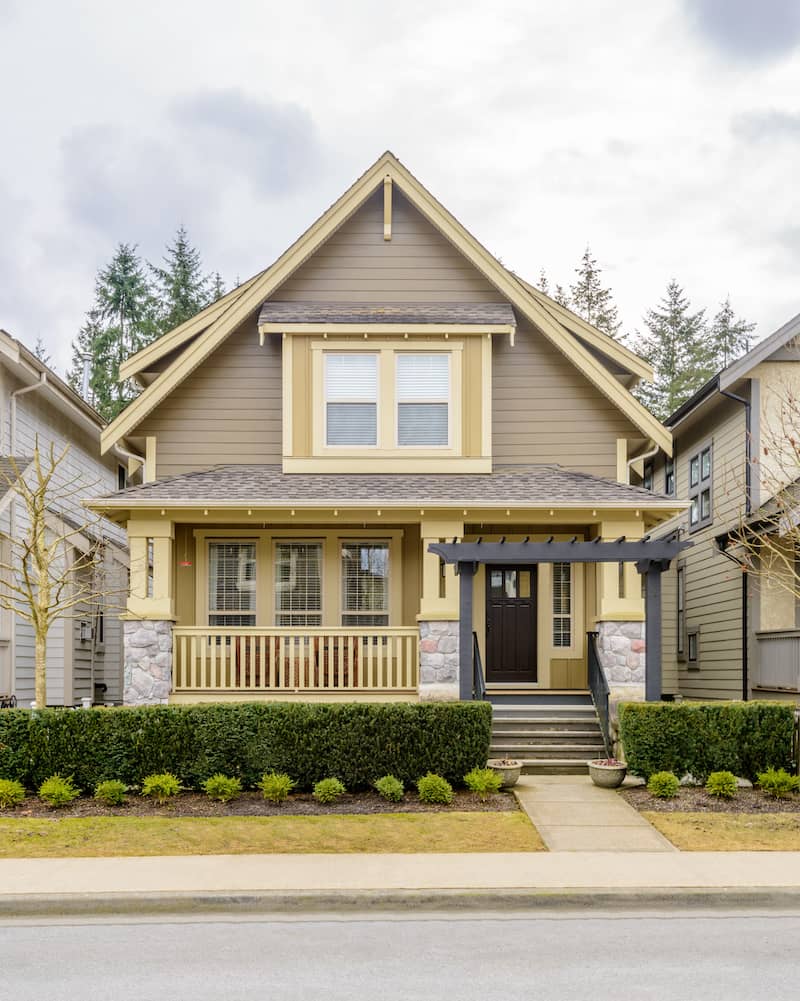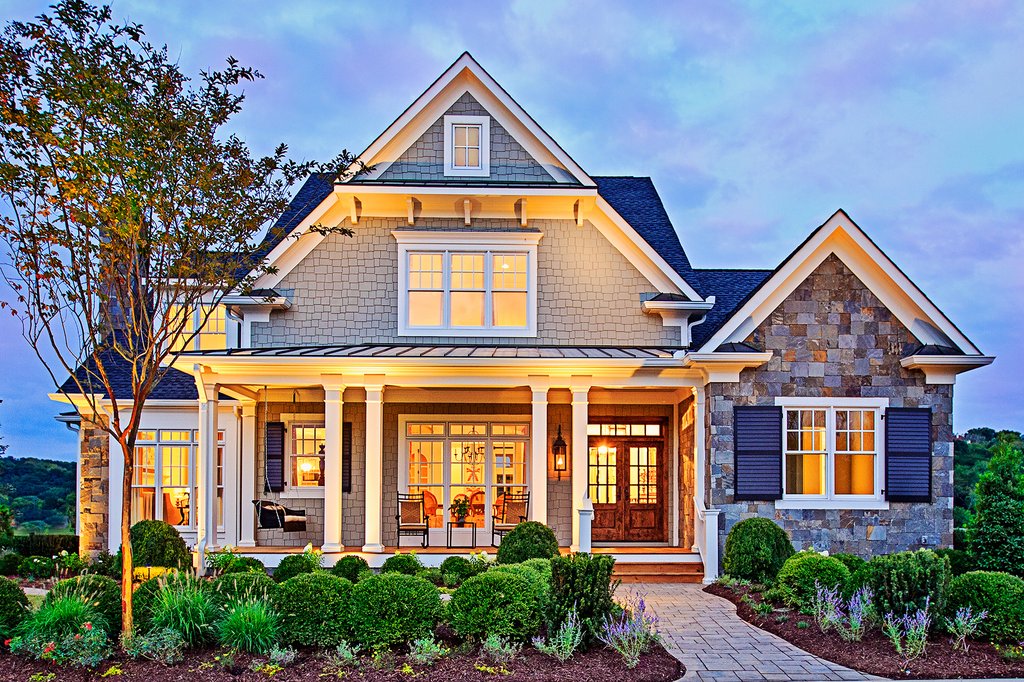The Function of Arts & & Crafts Architects in Elevating Architectural Providers in Residential Layout
Arts and Crafts architects substantially affect residential style through their dedication to craftsmanship and sustainability. They focus on handmade information and natural products, which boost both aesthetic appeals and neighborhood identity. By involving customers in the layout procedure, these architects create unique space that reverberate with personal preferences. This approach questions regarding the future trajectory of residential architecture and its possible impact on area characteristics. craftsman style house. What exists in advance for this ageless style viewpoint?

The Principles of Arts and Crafts Architecture
The significance of Arts and Crafts architecture lies in its dedication to workmanship and simpleness. This building activity arised in the late 19th century as a response to industrialization, emphasizing the value of handcrafted details and natural products. The concepts of Arts and Crafts architecture prioritize performance and harmony with the environment. Frameworks normally feature low-pitched roofings, large eaves, and revealed rafters, promoting a sense of unity with nature.
Artisans played a significant duty in this style, typically incorporating attractive components like stained glass, tiles, and woodwork, which show regional craftsmanship. The shade palette often tends to be earthy and controlled, allowing buildings to mix flawlessly right into their environments. On top of that, the layout motivates open layout and communal areas, promoting a feeling of togetherness. On the whole, the principles of Arts and Crafts architecture celebrate the beauty of simplicity and the relevance of human connection to both nature and neighborhood.

Sustainable Practices in Residential Style
While the demand for environmentally responsible living proceeds to grow, lasting techniques in property layout have acquired substantial traction among architects and property owners alike. Architects are increasingly incorporating energy-efficient innovations and sustainable materials right into their designs, intending to decrease carbon impacts and improve power preservation. Strategies such as passive solar style, eco-friendly roofs, and rainwater harvesting systems are becoming basic components of modern-day property architecture.
The selection of locally sourced materials reduces transport exhausts and supports local economic situations. Focus on natural light and ventilation not only boosts interior air high quality but additionally decreases dependence on synthetic lighting and environment control systems. These lasting practices show a commitment to preserving the setting while supplying homeowners with comfy, efficient living areas. As understanding of environmental concerns expands, the combination of sustainability in residential style is poised to end up being a defining quality of modern architecture, directed by the concepts established by Arts and Crafts architects.
Customization and Personalization in Home Design
Modification and personalization in home layout have become essential fads Visit This Link in action to the growing need for one-of-a-kind living atmospheres that reflect specific preferences and way of livings. Homeowners increasingly seek to customize spaces that resonate with their individualities, causing an extra purposeful link with their home. craftsman style house. This activity encourages architects to engage customers in the style process, cultivating cooperation that guarantees the have a peek at these guys last end result symbolizes the property owner's vision
Aspects such as bespoke layouts, customized materials, and tailored surfaces allow for a varied variety of expressions in domestic layout. Arts and Crafts architects play a crucial function in this advancement, emphasizing craftsmanship and quality. Their concentrate on incorporating artistic components with functionality guarantees that each home is not only cosmetically pleasing but also distinctly fit to the inhabitants' demands. This focus on modification enhances the total property experience, creating areas that are both personal and long-lasting.
The Influence of Arts and Crafts Architects on Community Appearances
As neighborhoods advance, the impact of Arts and Crafts architects significantly shapes their visual landscape. By highlighting handmade information, natural materials, and typical building strategies, these architects produce homes that reverberate with their surroundings. Their styles frequently include regional vegetations, textures, and colors, cultivating a feeling of consistency between built environments and nature.
In addition, the Arts and Crafts motion promotes community identity via building continuity. By motivating homeowners to take on similar style concepts, areas create a cohesive personality that boosts visual allure. This building harmony not just improves the aesthetic experience but likewise instills a sense of satisfaction among locals.
The focus on sustainability and workmanship in Arts and Crafts architecture lines up with modern values, making these designs pertinent in contemporary setups. Inevitably, Arts and Crafts architects contribute significantly to the general beauty and cultural stability of neighborhoods, leaving a long lasting impact on their visual legacy.

Future Fads in Arts and Crafts Architecture
With a raising focus on sustainability and personalization, future fads in Arts and Crafts architecture are positioned to blend conventional workmanship with contemporary development - craftsman style house. Architects are most likely to focus on green materials, utilizing redeemed timber and natural rock to enhance the sustainability of property layouts. The combination of clever home technology will end up being prevalent, permitting personalized living experiences without endangering visual integrity
In addition, the revival of artisanal methods will promote a renewed admiration for handcrafted elements, such as bespoke cabinets and custom-made floor tile work. Future designs may likewise reflect a focus on community-oriented areas, motivating interaction and connection amongst homeowners. Outdoor living locations check it out will certainly gain importance, seamlessly incorporating nature into the home environment. As Arts and Crafts architecture advances, it will remain to recognize its roots while adjusting to modern demands, producing harmonious spaces that mirror private worths and lifestyles.
Regularly Asked Concerns
What Influenced the Arts and Crafts Motion in Architecture?
The Arts and Crafts motion in architecture was influenced by a response versus automation, highlighting handcrafted top quality, natural products, and a return to conventional workmanship, aiming to create unified, practical areas that commemorated artistry and uniqueness.
How Do Arts and Crafts Architects Collaborate With Clients?
Arts and crafts architects collaborate with customers via open dialogue, prioritizing individual requirements and visual appeals. They stress workmanship and sustainability, promoting a partnership that integrates the customer's vision with the engineer's knowledge in style and products.
What Products Are Typically Made Use Of in Arts and Crafts Houses?
Usual materials in Arts and Crafts homes consist of natural wood, rock, and block, stressing workmanship and natural visual appeals. These aspects produce a warm, welcoming atmosphere, mirroring the motion's dedication to high quality and simpleness in style.
Just how Do Arts and Crafts Styles Boost Indoor Living Areas?
Arts and Crafts designs enhance interior living areas by promoting natural light, open floor plans, and handcrafted details. These elements foster a warm, welcoming environment, motivating a connection in between residents and their environments through thoughtful, functional aesthetics.
What Are Some Famous Instances of Arts and Crafts Architecture?
Famous instances of Arts and Crafts architecture consist of the Wager Home, Greene and Greene's masterpiece in The golden state, and the Robie Residence by Frank Lloyd Wright. These structures display handcrafted information and harmony with nature, specifying the motion's essence.